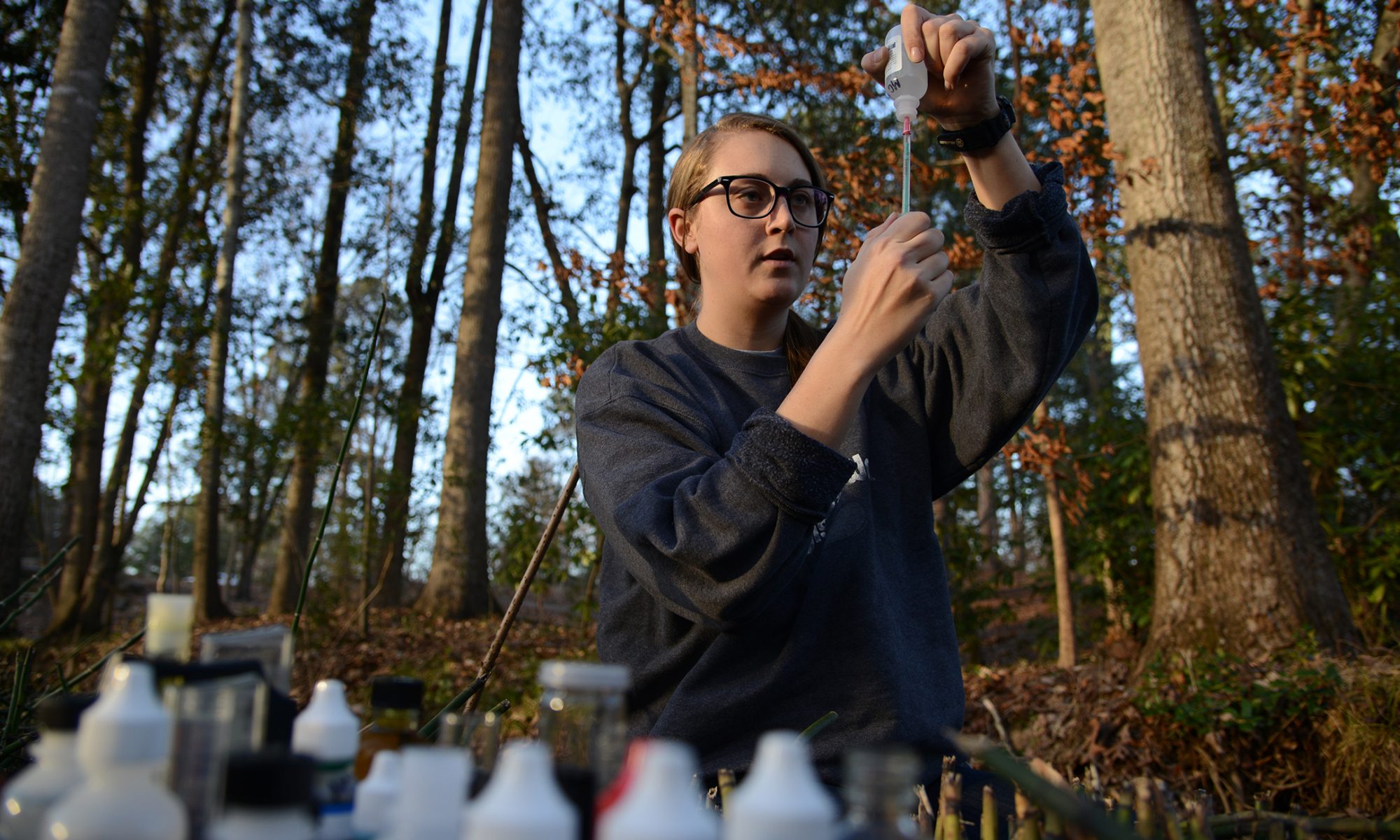
Water quality is extremely important, not only to the plants and animals in Alabama but also to the health of Alabama citizens. The best way to understand water quality is to monitor it closely. Monitoring water quality helps us understand the health of an ecosystem and the livelihood of its aquatic populations. Water monitoring reflects the health of surface waterbodies as a snapshot in time (weeks, months, and years). The water quality of a river is the reflection of what is happening in its watershed; or as Dr. Bill Deutsch, a co-founder of AWW, put it once, the quality of a stream is a reflection of the conscience of the people that live in its watershed. Generally, stream water quality does not change drastically unless there is some type of human influence, which is happening more and more often.
The objective of water quality monitoring is to obtain quantitative information on the physical, chemical, and biological characteristics of water. Variation in water quality over a 12-month period is, in general, dependent on: (1) long-term trends, (2) seasonal changes in temperature, rainfall, etc. and (3) random changes due to storms, rainfall, etc. Therefore, water monitoring should cover a significant length of time and include the types of weather conditions common in the watershed. Collecting six samples in six days is far different from collecting six samples every other month throughout a year-long period. Consistent monitoring helps detect any signs of deterioration in water quality.

Consider monitoring the same way you would care for your favorite indoor house plant. Do you water it once a week, once a month, or every three or six months? Or do you only water it once it appears to be on the verge of death? An AWW water monitor can also be likened to a diabetic person who must monitor their blood sugar regularly. It is doing something critical, and in my opinion, “the more frequently you do it, the more accurate your results ultimately become”.
AWW recommends conducting bacteriological and water chemistry monitoring on a monthly basis, with at least two weeks between sampling events; and conducting stream biomonitoring seasonally, or four times per year. This is considered sufficient to identify trends in water quality as well as potential pollution problems. Increased sampling frequency from monthly to twice a month during a year increases prediction reliability. Monitoring at a lower frequency may introduce increased error. In small steams, sampling 24 times per year (or every two weeks) is optimum. A low monitoring frequency is a less suitable approach because discharges and atmospheric events cause more sudden changes in water quality.
Except as needed for special studies, AWW does not advise collecting samples while it is raining, within 72 hours after a heavy downpour, nor when the water level is at a high, or flood, stage. During these three conditions, the water sample will not be representative of the “typical conditions” of the waterbody.

Citizen water monitoring is one of the best ways to be a good watershed steward. New technology may provide hydrologic and water quality data at near real-time and high temporal frequency (e.g., a stream gauge collecting data every 10 minutes). However, I believe the less frequent, but consistent, community-based water monitoring empowers the growing citizen science movement and facilitates public and stakeholder awareness regarding water, environmental, and natural resources protection. It is that intimate relationship between the monitor and their stream/lake that is, for now, more likely to change how we see our rivers. Besides increasing environmental awareness and literacy, AWW monitoring is gathering and providing information regarding basic baseline conditions in waterbodies, which is used for planning and policy, management and operational information, regulation and compliance, resource assessment, and research.

